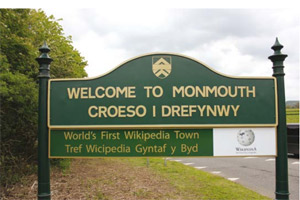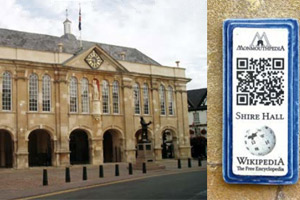As the Fusebox24 research project announces its results, the project leader, Gillian Youngs, Professor of Digital Economy, reflects on a career in research on the Internet and its diverse impacts.
22 Jan 2015

She is engaged in a range of policy-related and knowledge exchange processes linked to innovation in the context of the UK’s Innovation Agency, the Technology Strategy Board (TSB) and its current Catapult initiatives. The ESRC research seminar series Digital Policy: Connectivity, Creativity and Rights that she is leading has held several events jointly with the TSB ICT and Creative Industries Knowledge Transfer Networks that contribute to discussions on the agenda for the Connected Digital Economy Catapult (CDEC).
Professor Youngs' background is in experimental digital projects focusing on diverse aspects of social innovation in the digital economy: 3VTV1 and MonmouthpediA2. She has also been leading the ESRC research seminar series Digital Policy: Connectivity, Creativity and Rights (2011-13) as principal investigator with Dr Tracy Simmons, University of Leicester, Professor William Dutton, Oxford Internet Institute, and Professor Katherine Sarikakis, University of Vienna.
Diverse routes to, and forms of, digital innovation are a key theme in this work in which Youngs became engaged as Research Chair in the Faculty of Arts and Business at the University of Wales, Newport (UWN), where she is continuing a role as Visiting Professor. 3VTV is an experimental hyper-local online television service based in Tredegar in South Wales, a three-year project funded by the Welsh Government that draws on a wide range of skill sets at UWN. The service
 Shire Hall Monmouth. Right: QRpedia plaque for Shire Hall. Photo Mike Peel
Shire Hall Monmouth. Right: QRpedia plaque for Shire Hall. Photo Mike Peel
combines films about the local community, with content produced by UWN students from Newport Film School as part of ‘challenge weeks’ to engage them in the channel’s work, and user-generated content produced by local people. A major innovation has also been concerned with promotional films for local small businesses made by the channel’s professional filmmakers as part of 3VTV’s work to introduce them to opportunities of online marketing and e-business.
3VTV identifies itself as television made in Blaenau Gwent, for Blaenau Gwent – a local TV channel, broadcast over the Internet and on-demand, with no schedule, enabling its output to be watched at the viewers’ convenience. The aim is to show films about their local community that the people of Blaenau Gwent will want to watch. The name 3VTV stands for Three Valleys, because the channel is for everyone in the three valleys that make up Blaenau Gwent.
The main aims of the project include building on the community cohesion which already exists in Blaenau Gwent, giving the county borough a strong local voice, boosting the local economy by working with Blaenau Gwent businesses to help them market themselves. This strategy also encourages digital inclusion by giving local people another reason to go online as well as working with training providers to give people the skills that enable them to become actively involved.
3VTV is a distinctive, multi-faceted example of creative, social and economic experimentation in hyper-local media, seen widely now as one of the new areas for digital economy expansion and innovation. It harnesses the power of ‘the local’ and people’s (social, economic and cultural) identification with it as well as the interactive and horizontal possibilities of the Internet and associated technologies such as mobile devices that facilitate community participation and production of content. One of the interesting aspects of such developments is that physical place is fundamental to their modelling. This is also very much the case with MonmouthpediA and a long way from simplistic framings of virtual transformations as predominantly ‘placeless’ in their power and identity.
MonmouthpediA, the world’s first Wiki town, launched in May 2012 as a joint venture of collaborative knowledge innovators. They included Wikimedia UK, a local authority with digital aspirations as a NESTA Creative Council winner, Monmouthshire County Council and its innovative change agent Community Interest Company CMC2. The partnership, encompassing a range of traditional and digital technologies, represents the fusing of varied forms of expertise and craftsmanship in the interests of digital and community connectivity. Based on QRpedia technology it uses QR codes on a range of physical plaques attached to buildings and places. These can be read via smart phone cameras and free reader apps to connect to multilingual multimedia information about the area and its features, history, artefacts and natural environment. Based on a physical location the project is characterised by offline/online dynamics. In true Wiki fashion it has community co-creation and curation at its experimental centre with its local/global dimensions featuring varied kinds of engagements with ‘locals’ and ‘visitors’ including the virtual. More than 1,000 QR codes deployed across Monmouth offer the potential for information to be accessed in more than 250 languages. Geo-tagging of information also facilitates virtual tours around the town enhanced by use of augmented reality software including Layar and Wikitude.
Youngs’ involvement with MonmouthpediA included a short consultancy placement with the project under a Strategic Insight Programme. This focused on sharing expertise relating to digital economy and innovation. It also embraced the further potential of activities and processes associated with MonmouthpediA for digital tourism and heritage, as well as digital inclusion and creativity. Knowledge exchange work also included initial discussions about possibilities for bringing the different forms of innovation, centred on projects such as 3VTV and MonmouthpediA. The latter can be viewed as part of the path towards the ‘Internet of Things’ (IoT). IoT is generally understood to represent the next major stage of the Internet, where the informational power of the online environment becomes embedded in the concrete world around us. It renders our environments more intelligent and responsive by ‘sensing’ data as well as making it accessible to us.
Both 3VTV and MonmouthpediA demonstrate that we have much to discover about what innovation is in digital times: who the innovators are and where and how innovation takes place. Innovation in the context of these projects has substantial grassroots, both community and social, as well as informational and creative components. The projects have strong place-based identities as well as the capacity to harness the full global, as well as local and mobile, reach of the Internet and its bottom-up and horizontal communication potential. The projects also demonstrate different forms of both local and global co-creating community collaboration.
Too many perspectives on innovation, as well as those in policy circles, are working with the old industrial paradigm of innovation or the remnants of its mind-set. This pre-Internet model is based predominantly on large-scale investment, players and technology as things, whereas in digital (information society) times, innovation is about ideas, people and different forms of connectivity through information, multimedia and co-creation, as much as it is about things. It is about new ways of linking ideas, people and things, to generate new business models and services, and more responsive and effective ways of organising cities and environments, homes and work.
Innovation is out of the industrial box in a digital scenario. While innovation will continue to be driven through traditional routes of science, technology and industrial innovation, it is something that can be generated at grassroots level by an individual in his or her bedroom at home, in the schoolroom, on the kitchen table, in a discussion among a group of friends in the pub. Multimedia digital technology has mass availability where there is connectivity, and greater penetration of high-speed broadband and expanded content and availability will boost the possibilities for innovation even further.
These are innovative community-based projects of contrasting kinds showing how the horizontal potential of the Internet and its multimedia power can bring people, communities and their interests together to help build a digital economy with complex local, inclusive and creative dynamics. Such projects indicate that grassroots and community-based innovation of the not for profit variety can be a growing dimension for building a new culture of digital innovation. The digital economy does not follow the old industrial boundaries separating the market and other sectors; on the contrary, it is highly disruptive of those boundaries. Now we need a lot more work to infuse policy approaches with such disruptive sensibilities so that the number of routes to innovation can be expanded. This needs to happen, even beyond the current spotlight on small and medium-sized as well as micro-enterprises, to include and engage all forms of social and cultural digital innovation.
These are among a broad range of policy-related issues that have been explored in the ESRC research seminar series Digital Policy: Connectivity, Creativity and Rights that Professor Youngs has been leading. The series has been bringing together a distinctive mix of academic researchers at all levels, including research students, alongside policymakers and practitioners. So far, seven major seminars have been held in the series in London, Newport, Oxford, and Leicester, with the eighth upcoming in Vienna. The series has included seminars and subsequent summary papers to contribute to the agenda-setting debates for the Connected Digital Economy Catapult being launched by the Technology Strategy Board, whose ICT and Creative Industries KTNs have co-sponsored the relevant seminars in the series, one of which was held at NESTA in London. Other co-sponsorships and collaborations on seminars and events have included the dot.rural RCUK Digital Economy Hub at Aberdeen University. Policy areas in which the seminars have engaged include: Internet governance and national digital policies; local TV; Communications Bill processes.
Staff page for Professor Gillian Youngs
Article reproduced from Research News Winter 2012/13